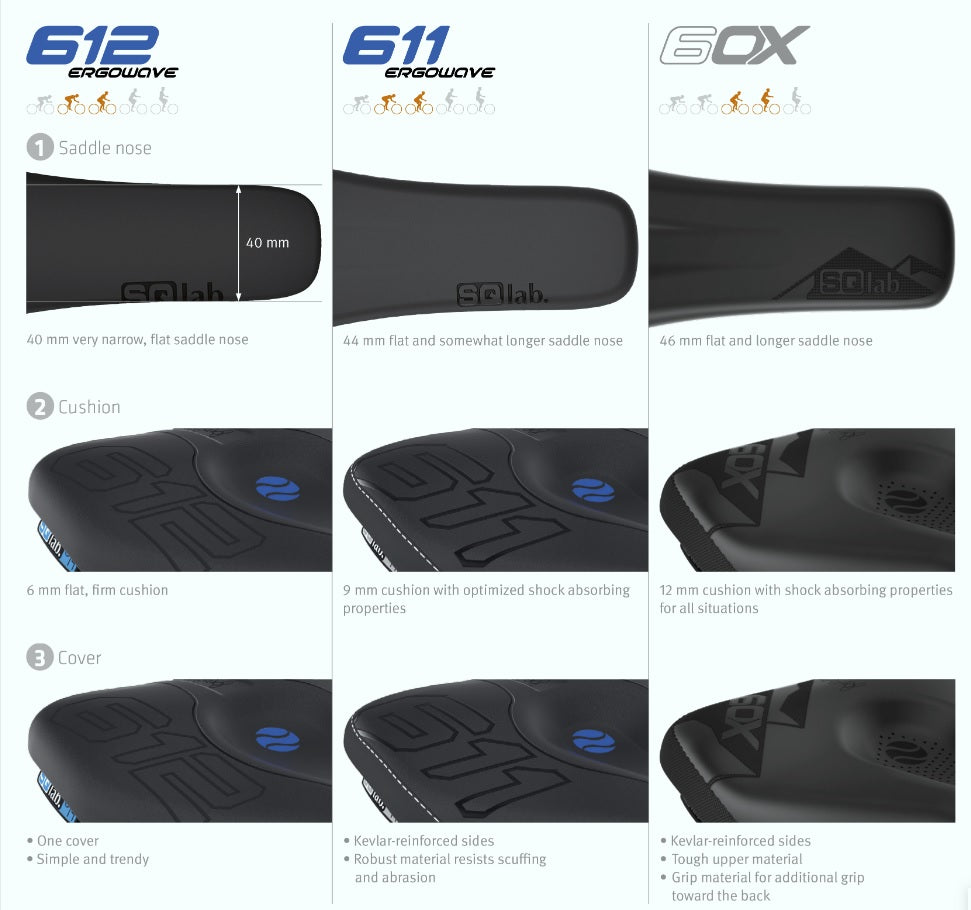
How to fit SQlab saddles
If you are looking at purchasing an SQlab saddle it's important to get the width of your sit bones first. This can be done by sitting on a stool with a sheet of corrugated cardboard between your butt and the stool. Maintain a straight spine and put pressure into the cardboard. Mark the two impressions.

You'll need to check your width in relation to the size on the fit chart. SQlab takes into account the position you have on the bike, as you get into more aggressive position on the bike (saddle to bar drop) your sit bones actually narrow and as you sit more upright you'll need a wider saddle - got it? See the chart below to determine the width of the saddle your might need.

If you want to do some comparisons with your existing saddle you can measure the effective width of your current saddle. Make sure you take into effect the rounded edges of your current saddle. See below.

Saddle Options
There is a few saddle options available, depending on your type of riding you are doing. They basically all follow the same raised rear section and middle scoop - so if you are comfortable on a 612, it will still feel the same as a 60X. The nose shape and padding densities get tweaked a little depending if its off road, MTB or road. All saddles are unisex. Dedicated offroad versions get some Kevlar protection on the rear portion of the saddle, this just gives a little more protection when you stack it or want to rest it up against a tree or rock.


Here is a quick suitability guide for the saddles
- 612r - Narrower section and lightweight padding - Road
- 612 - Firm padding, no side protectionRoad or gravel
- 611 - Kevlar protection - Gravel, MTB
- 60x - Grippy top section, softer padding, heavier - MTB, Enduro
- 610 - Softer padding - Gravel, Touring and commuting

Active or Not
Now decide if you want the "Active" versions. Active versions have adjustable elastomers built into the rear saddle rails (3 densities are included with all Active models) It allows the natural side to side pelvic movement - just the same movement as we are walking. The "Active" is subtle and it also helps riders who's bodies are not in perfect alignment (who's are?) and is ideal for riders who have leg length discrepancies. As a side effect (in a good way) of the "Active" system road and trail shock is dampened with your saddle being isolated between the elastomers so it acts like a little bit of a suspension system for your rear.
Rail Choice
Choose the rail option based on how much weight you want to save and your budget. The CrMo option is the heaviest but offers excellent value. S-Tube is the most popular. It's a Ti alloy which offers excellent strength and low weights. And of course carbon if you just love the look and weight of that magic material. SQlab use oval 7mm x 9mm carbon rails - so make sure your post rails are compatible.
